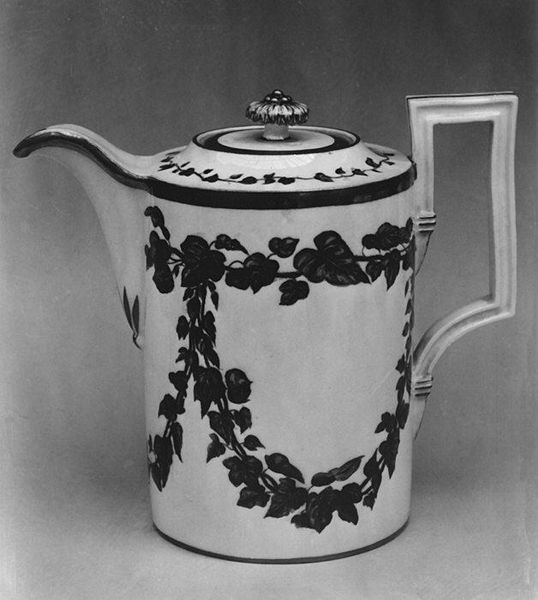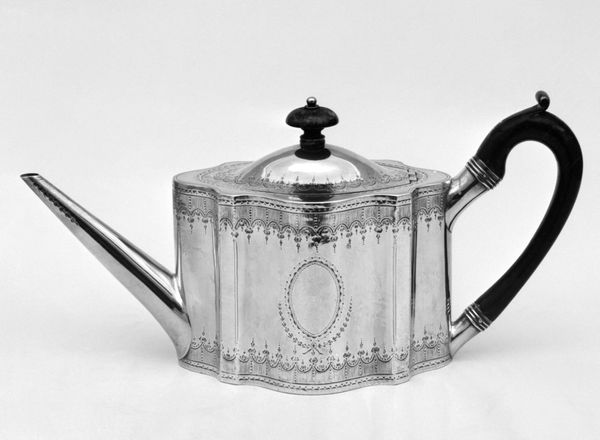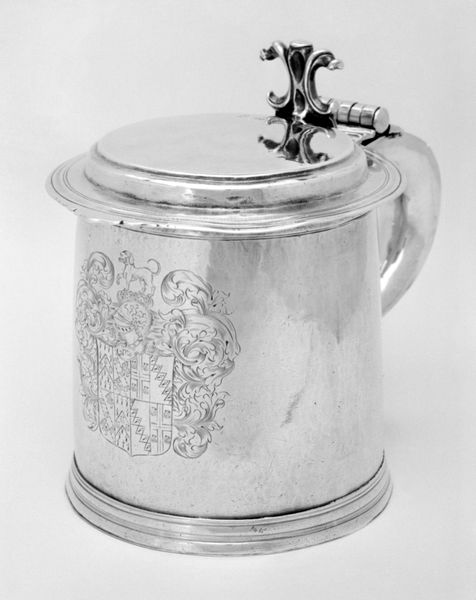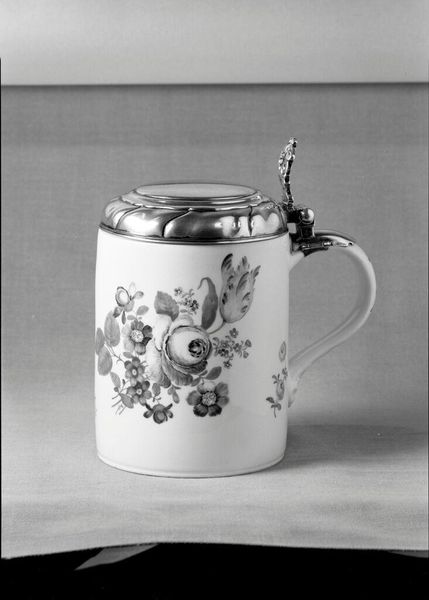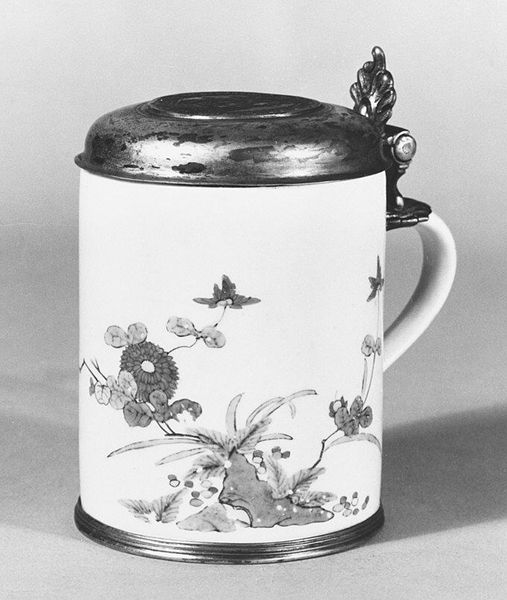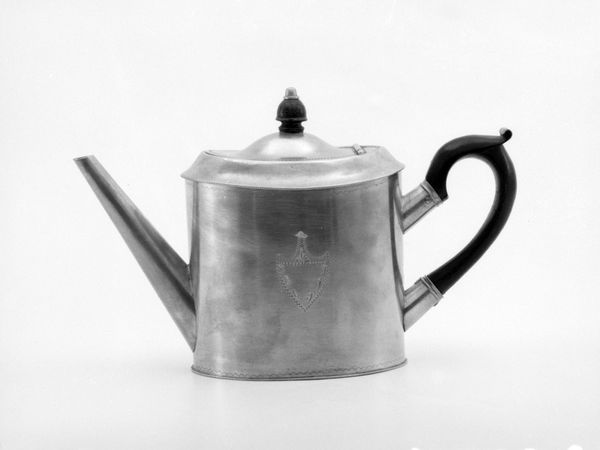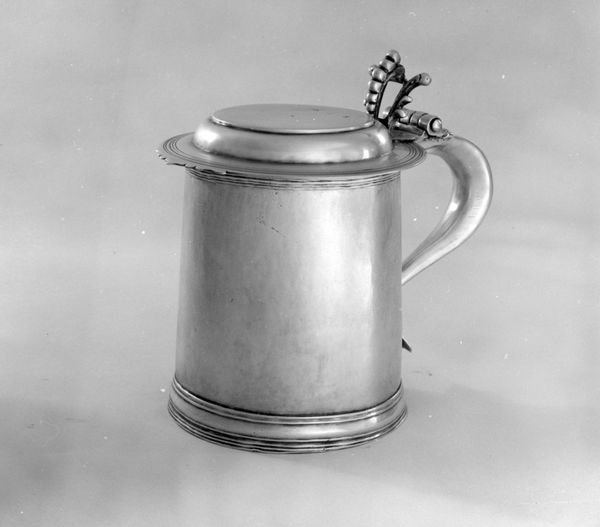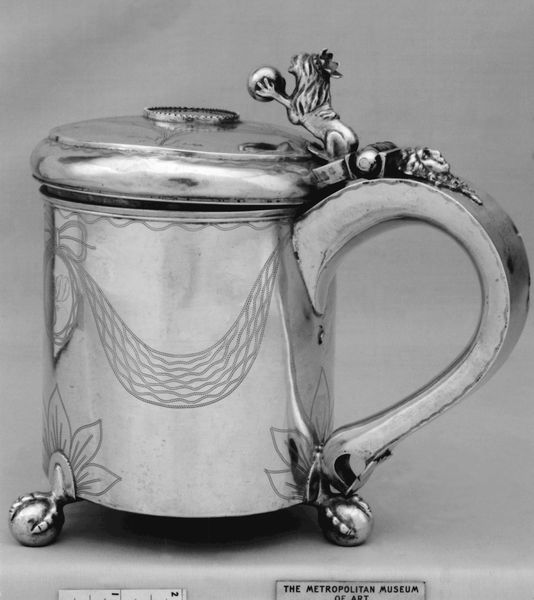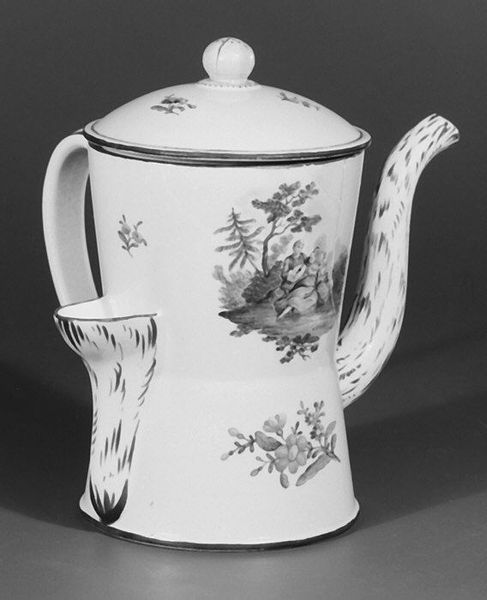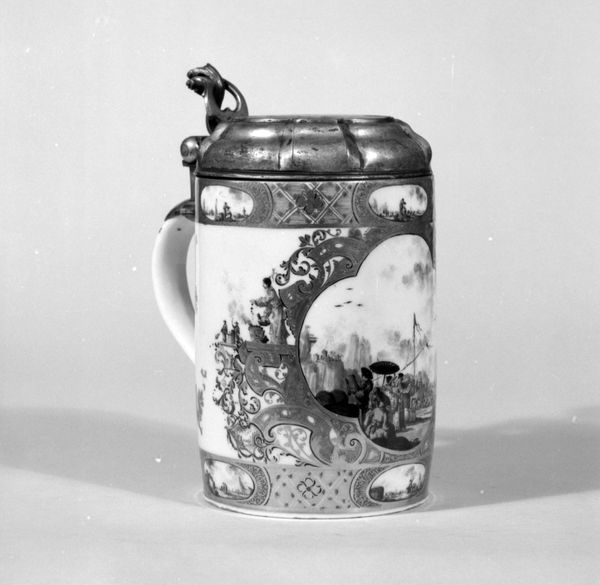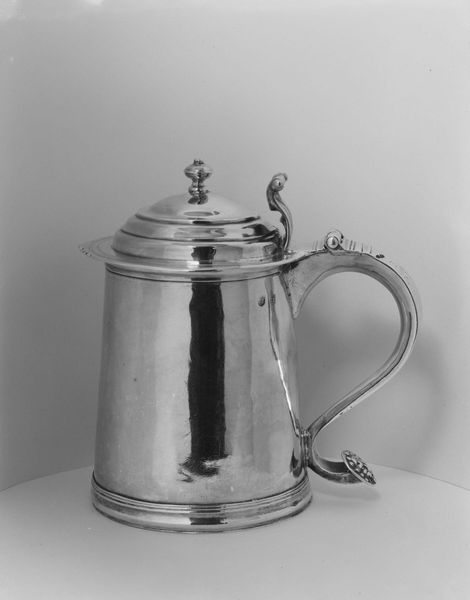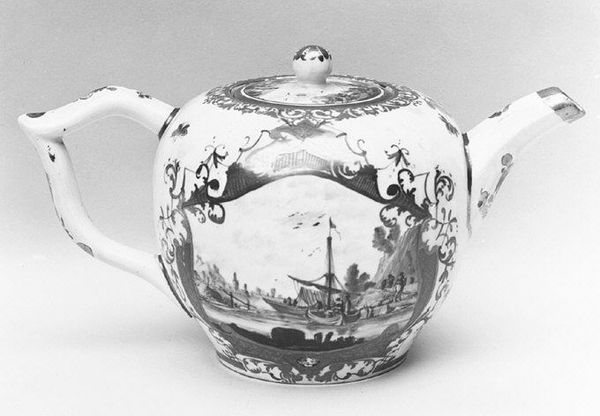
Dimensions: Height: 6 3/4 in. (17.1 cm)
Copyright: Public Domain
This elegant coffeepot was made in Gotha, Germany, sometime between 1757 and 1900. The porcelain pot, with its neo-classical lines and delicate floral decoration, reflects the refined tastes of the rising middle class in 18th and 19th century Europe. As coffee consumption moved from the aristocratic class to the bourgeoisie, the coffee service became a symbol of domesticity and social status. Mass-produced objects like this coffeepot allowed middle-class families to emulate the rituals of the upper classes. The inscription on the pot, in German, suggests it was made as a gift for a friend or loved one. Items of this type demonstrate the growing commercialization of culture, where personal expression and social connection are intertwined with consumer goods. To fully understand the social context of this object, one can research the history of coffee consumption, the rise of the middle class, and the development of porcelain manufacturing in 18th and 19th century Germany. These layers of meaning add to our appreciation of this beautiful object.
Comments
No comments
Be the first to comment and join the conversation on the ultimate creative platform.
